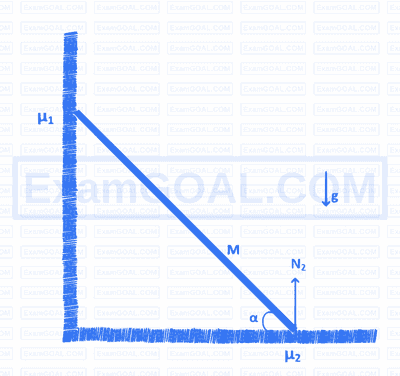Consider a mass-pulley system as shown in the figure. There is a wedge of mass $M$ and equal wedge angles $\theta$ lying on a rigid horizontal table. The coefficient of friction between the wedge and the table is $\mu$. There are two blocks of mass $m_1$ and $m_2$ lying on the incline of the wedge. The coefficients of friction between the blocks and wedge are $\mu_1$ and $\mu_2$ as shown in the figure. Consider $m_1>m_2$ and the coefficients of friction ( $\mu, \mu_1$ and $\mu_2$ ) to be less than $\tan \theta$. Gravity is acting downwards with acceleration due to gravity $g$. What should be the value of $\frac{m_1}{m_2}$ so that the system is in equilibrium?

What is the maximum angle of incidence $\theta_i$ in the figure for which the ray would satisfy the condition for total internal reflection at the boundary of media of refractive indices $n_1$ and $n_2$, where $n_1>n_2$ ?
+
$$ \text { What is the equivalent resistance between the points } A \text { and } B \text { in the figure? } $$

